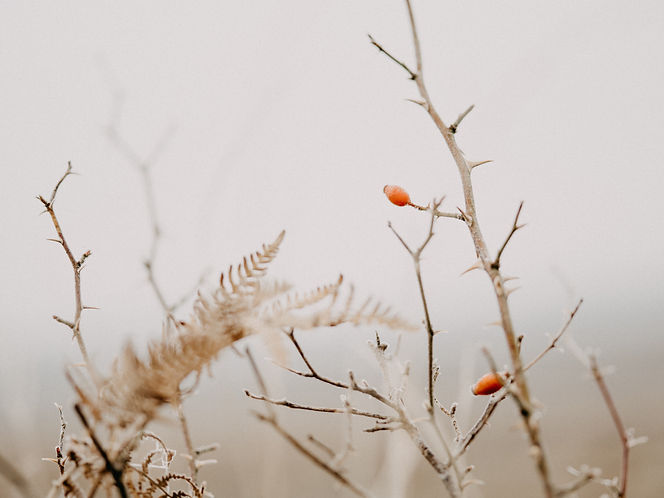Welcome to week one of the Sacred Mile Project. If you don’t know what The Sacred Mile Project IS, you can read the introductory post.

“There are no unsacred places;
there are only sacred places
and desecrated places.“
Wendell Berry - “How to Be a Poet”
This place is holy. This place is desecrated. This place is damaged by humans. This place is preserved by humans. This place is for humans. This place is for itself, for the nonhuman beings who call it home. I come here and carry nothing back but trash, bits and pieces discarded by other humans. In this way I try to be a friend, an ally to this place. In this way I try to honor and revere this place that is neither honored nor revered by most humans.
“This place” is the Salish Ponds Wetland Park, a 70 acre park surrounded by busy suburban streets and businesses. Once a quarry mined for rock aggregate to expand Interstate 84, the property was donated to the city of Fairview in 1999. The quarries were then converted to ponds and, for a time, were stocked for fishing. But eventually the number of humans congregating around the ponds began stripping the banks of vegetation, leading to erosion. In 2012 the city began a restoration project to transform the park to a wildlife destination. There are still fishing spots along the banks of the ponds, but as far as I know they are no longer stocked with fish every year. It’s one of my favorite places.
Books about wildness, about visits to remote locations rich with spiritually inspiring panoramic views and unfamiliar human customs, are very popular.
Salish Ponds is not a wild place. It’s traversed by many humans every day, noisy with the rush and rumble of vehicles on the roads around it. It’s not a place to escape the hustle and bustle of modern living and pretend I’m in the wilderness communing with the silence and hoping a bear doesn’t eat me.

It’s more a feral place, a ragged patch of semi-wildness tangled in the web of suburban blandness. A liminal tapestry of trees, ponds, and paths, thoroughly enchanting despite the litter left behind by the careless. Every time I come here I’m greeted by some delight, shown some treasure overlooked by dog walkers and headphone-wearers hustling along the path in the name of fitness.
Gravel crunches under my feet. Electric wires hum overhead, suspended from massive, cage-like metal towers. The static crackle sets my teeth on edge, but also thrums along my skin in a way that is almost pleasant, and almost frightening. My heart beats faster under the hum, and I remember that beneath my learned language, my warm coat, my combed hair, I am still an animal. My body responds to the unfamiliar as any animal’s body, taut with caution, whatever my mind tries to tell me about the normalcy of electric wires singing in the winter air. We are animals still, however much we tend to see ourselves as other than, as separate from, nature. My thoughts wrestle with the idea of humans as nature as my feet carry me over the gravel. My mind says I am not this. My body knows otherwise. The wetlands reminds my body of this each time I return.
I find fewer books about staying put and digging deep into the seemingly prosaic world of sidewalks and public parks in order to foster a connection with nature. But these places are still the land. My back yard is the land. The dandelion in the sidewalk crack, the moss growing in the windowsill, the fir cones on my driveway, these are nature. Just as we are.
I think of all this as I stroll through the rain, stopping to take pictures of moss, trees, rosehips spangled with raindrops, ponds rippling with concentric circles.

Of course this is the whole point of this project, to immerse myself in the holiness of the here and now, exactly as it is. To know with my whole being that every mile is a sacred mile, even that stretch of busy city street with trash in the gutters and graffiti on the bus stop shelters. To approach every place my feet carry me with respect and reverence. To commune with the spirits of place - for there are spirits in the alleys and shopping malls too, just as there are on this rain-soaked pocket of weeds and water situated between a Target parking lot and a housing development. I want to know them better.
Sacred Mile Project Journal Prompt Number One:
How does it make you feel to think about humans as animals? About humans as nature? Does it feel true? Why or why not?
(Remember, the Sacred Mile Project is a very personal thing, and you don’t need to do any activities or journal about any of the prompts in order to participate. But if you do participate, and wish to share your thoughts or experiences, please drop a comment here, or post on social media with #SacredMileProject. I’d love to see what you get up to and hear your thoughts!)
All photos in this blog post copyright Michelle Simkins, 2023. Please don’t reproduce or use for purposes other than personal, private use without permission.
Info on the history of Salish Ponds Wetland Park came from this article at The Oregonian.
If this post inspired or informed you, or just made you happy, feel free to buy me a cup of ko-fi. Your support helps with the cost of web hosting and other expenses, allowing me to spend more time creating posts for you.

Comments